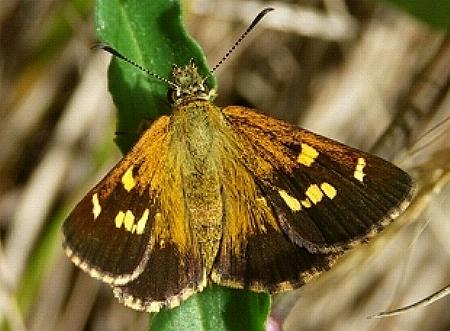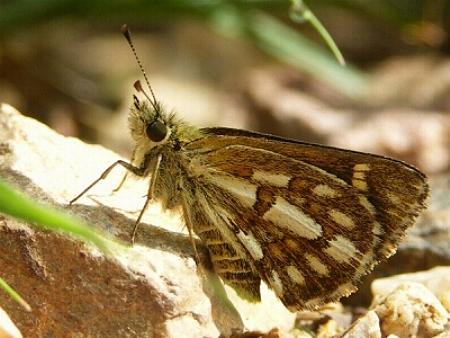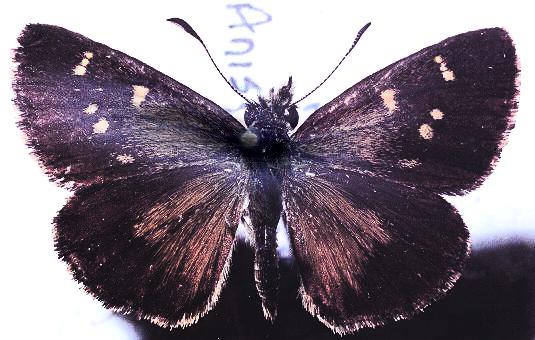
| Wedge Grass-skipper (one synonym : Trapezites paraphaes Meyrick & Lower, 1902) TRAPEZITINAE, HESPERIIDAE, HESPERIOIDEA | (donherbisonevans@yahoo.com) and Stella Crossley |

(Photo: courtesy of Nick Monaghan)

| Wedge Grass-skipper (one synonym : Trapezites paraphaes Meyrick & Lower, 1902) TRAPEZITINAE, HESPERIIDAE, HESPERIOIDEA | (donherbisonevans@yahoo.com) and Stella Crossley |

(Photo: courtesy of Nick Monaghan)
The Caterpillars of this species are greenish brown, with indistinct dark lines along the body. The caterpillars live, often communally, in a shelter constructed of dead leaves and debris at the base of a foodplant. They feed nocturnally on :

The adults are brown fading to orange at the wing bases, with cream spots on the forewings. The undersides of the forewings are dark brown with an orangish strip along each costa. but the hindwings have arcs of white spots, and both fore and hindwings have chequered edges underneath. The butterflies have a wing span of about 3 cms.

The eggs are laid in a row of half a dozen on th underside of a leaf of a foodplant.
This species occurs in the Dividing Range, above 1,000 meters, in :
Further reading :
Michael F. Braby,
Butterflies of Australia,
CSIRO Publishing, Melbourne 2000, vol. 1, pp 116-117.
Gustavus Athol Waterhouse & George Lyell,
Descriptions of and notes on some Australian Hesperidae,
Victorian Naturalist,
Volume 28, Part 12 (1912) pp. 223-224.
 caterpillar |  butterflies |  Lepidoptera |  moths |  caterpillar |
(updated 19 March 2011, 29 September 2013, 10 September 2021)